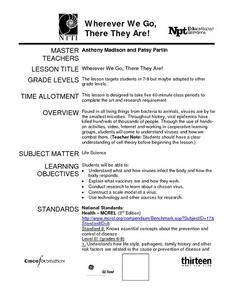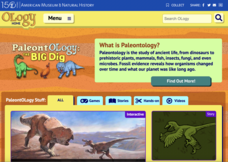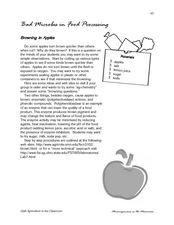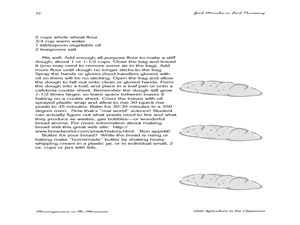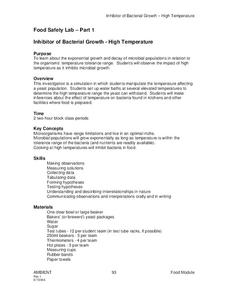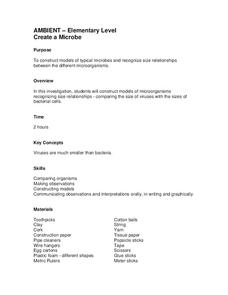Curated OER
Predicting the Growth of Microorganisms
Students determine where microorganisms might be found around their school. In this scientific investigation lesson plan, students collect cultures from various locations and place these in petri dishes. They incubate the cultures to...
Curated OER
On the Microbe Trail: Bacteria and Aseptic Technique
Young scholars pour, label, streak, seal and store plates in an incubator. They identify areas in their environment that provide a rich fauna of microbes once they have been swabbed. They identify areas of contamination through a...
Baylor College
Milestones in Microbiology
Life science learners read a set of six short Discovery Readings that describe historical events in the field of microbiology. For each, they identify clues about when the event occurred and then they try to arrange events in...
Curated OER
Hazards of Defrosted Food
Peas spoilage hot, peas spoilage cold: examine the bacterial growth on newly defrosted peas versus peas that have been defrosted for 24 hours. Using the session one questions in the "Microbes and Food Spoilage" PDF, learners will make...
Curated OER
Wherever We Go, There They Are!
The central video for this instructional activity is not available through the included resource link. However, the activity that simulates the passing of a virus through a population is impacting and the other resource links are...
Curated OER
Design a Reef!
Using a miniature coral reef aquarium kit, young ecologists model this unique ecosystem. They research various coral reef organisms and their niches, and they culminate the project by working together to write a report. Use this activity...
American Society for Microbiology
”Build a Bacterium” Scavenger Hunt
An exciting activity has scholars use cell parts to build bacteria through cooperation with other groups. Each group has some of the cell parts needed, but they must trade with other groups to be able to fulfill their function as a...
Ocean Explorer
Architects of the Coral Reef
Coral Reefs are the focus of a life science lesson plan. Upper graders look at how coral reefs are formed, how the animals and plants reproduce, and the variety of ways that humans benefit from coral reefs around the world. Groups of...
American Museum of Natural History
Anatomy Adventure
Sometimes science is puzzling. Using an online animation, individuals manipulate skeletal bones of an ancient species to recreate its skeleton. Learners complete the skeletal puzzle and learn about the process of paleontology in person...
Curated OER
Bad Microbes in Food Processing
Students complete an experiment to determine if there are bad microbes in food processing.In this bad microbe experiment, students use apples to see how they react to oxygen. Students test apples with chemicals to observe the changes.
Curated OER
Good Microbes in Food Processing
Students participate in a bread making experiment to understand the good microbes in bread. In this bread making activity, students prepare bread in a bag with varied recipes and note results.
Curated OER
Microbes and Health
Sixth graders investigate microorganisms. In this Science lesson, 6th graders examine how microorganisms can be both positive and negative. Students list diseases caused by microorganisms.
Curated OER
All Creatures Microscopically Small
Students investigate physical and behavioral characteristics of different microbes and create research- based 'Microbe Biographies.' students compare microbe sizes and examine how size of a microbe relates to its physical and behavioral...
Curated OER
Theater Game: "The Good, the Bad, and the Bountiful"
Young scholars play a game to demonstrate the detrimental effects of an algal bloom on the environment. In this microorganism instructional activity, students discuss microbes and algae. They dramatize the effects of an algal bloom using...
Curated OER
Investigative Case - Protistan Tales of Atlantic White Cedar Swamps
Students use this WebQuest to explore the vast diversity of microbes, especially those microbes of the Atlantic Cedar Swamps. They tell a story about the protests of the Atlantic Cedar Swamp in the form of anthropomorphism.
Curated OER
Microbial Influence on Earth's Systems
Students identify the different biogeochemical cycles on Earth. In this biology lesson, students observe microbes under a microscope. They compare and contrast respiration and photosynthesis.
Curated OER
Cellular Invaders
In this biology activity, students study the animation on how the body's defense mechanism fight microbes. They write short answers to 8 questions that follow.
Curated OER
The Science of Microbes (Observing Different Microbes)
Students use their observation and inquiry skills to understand microbes. In this microbiology lesson, students explore slides with a microscope. Students gain experience with preparing slides and proper use of a microscope while...
American Museum of Natural History
What Do You Know About the Human Microbiome?
Scholars answer 10 multiple choice questions to test their knowledge about the human body and microbes. Correct answers come with a rewarding tone and brief description.
Curated OER
Food Safety Lab
Students determine the optimal living conditions for yeast and apply these results to microbes in food. In this microbiology lab lesson plan, students observe the reaction of yeast to elevated temperatures. They relate these results to...
Curated OER
Microbes: Too Smart for Antibiotics?
Students examine how germs spread from one person or object to another. They discuss antibiotic resistant bacteris and examine the benefits of microorganisms. They explore methods of curbing antibiotic resistance.
Curated OER
Create a microbe
Students explore viruses and bacteria. They construct three dimensional models of microorganisms recognizing size relationships by comparing the size of viruses with the sizes of bacterial cells.
Curated OER
Let's Grow Some Microbes!
Students investigate the effect that sterile and non-sterile environments have on growth of microbes. In this biology lesson, students observe the appearance of sample test tubes for 7 days. They explain why some test tubes' appearance...
Curated OER
Classify the Microbes
Students classify microorganisms into categories based on their characteristics. Pupils use a taxonomic key to identify organisms. They classify certain bacteria, protists, and viruses using a classification or taxonmic key.




